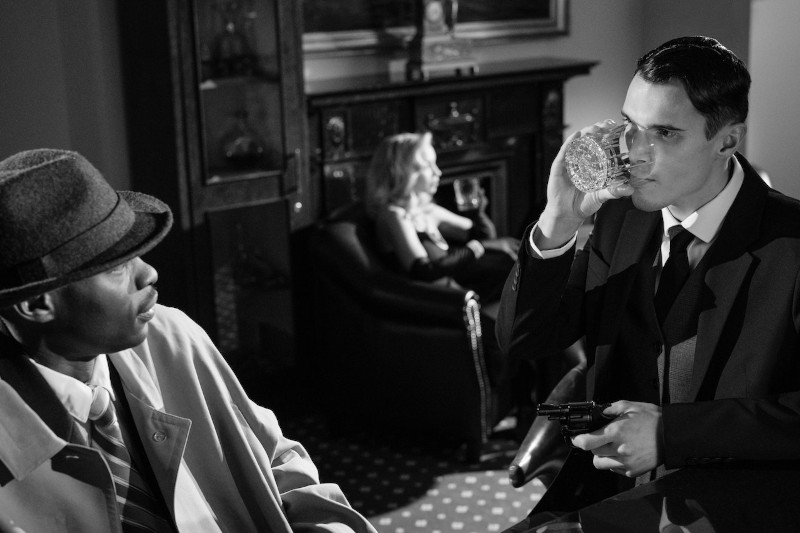Stepping back in time, there’s a common whisper among whisky enthusiasts – the 1960s produced a superior Scotch. Why do they uphold this era as the golden age?
A Boom Period: US and Japan’s Thirst
The 1960s was a period of skyrocketing demand, particularly fueled by an insatiable American market and a burgeoning demand from Japan. This wasn’t just a random spike; it was a transformative period. New distilleries sprung to life like Tormore and Tamnavulin. Names like Port Ellen and BenRiach, long silent, began to echo again in the distillation chambers.
The surge of interest in Scotch during the 1960s, particularly from the US and Japan, wasn’t just a fluke. Post-WWII prosperity in the US birthed a middle class with disposable income and an acquired taste for finer things. The American palate, more attuned to lighter spirits like bourbon, instigated a shift in Scotch profiles
But, was it only about numbers, or did the taste transform too?
Demystifying the Flavors

The Barley Tales
To meet the soaring demand, the search for high-yielding barley varieties intensified. While this wasn’t the first instance of such a quest (recall the Spratt-Archer from the 1918-1939 period), the 1960s introduced the Golden Promise, ruling till the 1980s. Those who’ve taken a sip from distillers revisiting this variety note an oilier texture, contrasting with today’s standard varieties. Yet, remember: these selections weren’t just about flavor. If a unique taste emerged, it was often accidental.
Barley, the bedrock of Scotch, underwent significant changes during this era. The 1960s demand surge instigated the hunt for high-yielding varieties. The fascinating transition from hybrids like Spratt-Archer and Plumage-Archer to dominant names like Golden Promise wasn’t just about yield. Although driven by efficiency, these changes inadvertently influenced flavor profiles.
The Subtle Peat Influence
Peat usage saw a decline throughout the 20th century. Still, the 1960s witnessed more liberal use of peat, even in regions like the Highlands. Comparing whiskies from then to now reveals the nuanced presence of peat – subtle, yet significant. The decline of peat usage is more nuanced than it might appear. While its use diminished, the 1960s still saw a considerable presence of peat, especially in regions like Highlands and Speyside. It wasn’t just the smoky flavor; peat imparted earthy tones, a hint of the wild, and an aroma reminiscent of Scotland’s rugged landscape. The next time you get a hint of peat in a non-Islay whisky, think of this delicate influence from the 60s.
Malting Matters
Increased efficiency drove distillers away from their floor maltings. Larger Saladin maltings took prominence. Did this affect flavor? If you ask distilleries like Laphroaig, flavors indeed varied between kilns. However, it’s debatable whether this had a widespread impact.
Malting might sound like a mundane step, but the switch from floor maltings to larger setups significantly impacted the volume and, potentially, the flavor. To understand this, imagine the difference between baking a few cookies at home and mass-producing them in a factory. Factors like temperature, moisture, and even air circulation can alter outcomes minutely but noticeably.
The Mash Tun Revolution
With a nod from brewing technology, the 1960s saw the incorporation of Lauter rakes into mash tuns. Here’s an interesting tidbit: this adaptation led to cloudier wort, which, as deduced by industry experts later, resulted in a significant drop in ester levels in spirits.
The use of brewing technology in the 60s might sound like a simple technological upgrade, but its implications run deep. By introducing Lauter rakes, distillers could harness a finer grind, resulting in a faster mash cycle. But what does that mean for you? Think of it as the difference between steeping tea leaves briefly versus letting them sit. The flavors extracted, the nuances, and even the aroma undergo shifts. Cloudy wort and its consequent influence on esters are an examples of these subtle transitions.
So yes, this was one transformation with a direct influence on flavor.
Fermentation Fables
Yeast changed the game too. As the availability of brewers’ yeast diminished, distillers’ yeast became the favorite child. Fermentation periods extended, leading to more fruity nuances.
Heat of Distillation
Distillation methods shifted gears too. The direct fire began its exit, replaced by steam, which added weight to the spirit. A subtle change, but one that experts swear by.
Steam might seem the obvious choice for distillation today, but the late 50s and 60s’ shift from direct fire was significant. Direct fire, with its uneven heating, led to caramelization at the pot’s bottom, adding a unique richness to the spirit. If you’ve ever noticed a certain depth in an older Scotch, the long-gone direct fire could be why.
Condensation Changes
Moving away from the heavy worm tubs to shell-and-tube condensers meant a cleaner spirit. Yet, innovative distillers found ways to add that old-world charm back.
The Wood Chronicles
Your favorite Scotch owes much to the cask it matures in. The 1960s were revolutionary in this aspect. The use of ex-Bourbon white oak casks began dominating, edging out ex-Sherry casks. Though this didn’t change the Scotch landscape overnight, over time, it did introduce a slow metamorphosis in flavor profiles.
While oak barrels have long been associated with whisky aging, the 50s and 60s saw a significant shift in wood preference. Think of wood as tea – different types steep different flavors into the spirit. The transition from Sherry casks to ex-Bourbon white oak wasn’t just economical; it gradually evolved the flavor profile of mature whisky. As you take your next sip, try to discern these woody notes – are they reminiscent of dried fruits or more towards the vanilla end? The answers might just be rooted in this era’s choices.
Looking Ahead by Looking Back
While stating that the 1960s Scotch was universally superior is a stretch, this era undoubtedly brought about radical shifts in production, taste, and techniques. Modern distillers, while equipped with advanced tools, are often found peeking into these historic methods. It’s not about recreating the past but drawing inspiration from it.
Danielle’s Unique Bio:
Meet Danielle, a whiskey whisperer and a wordsmith whose tales of the golden elixir have graced the pages of BlackSerpent, BottleStorage, and Cipro. Danielle’s journey into the world of spirits began long ago, and her passion for whiskey has only grown stronger with time. Her writings are like a finely aged scotch, smooth, rich, and best enjoyed slowly.
